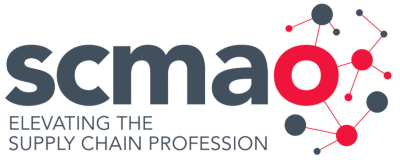Top 5 Supply Chain Imperatives for 2023 and Beyond

While the supply chain ecosystem has been disrupted innumerable times in the past 3 years, we have reached a juncture where supply chain leaders are now in a position to disrupt, that is, peak effectiveness by ensuring supply chain is at the crux of all discussions which are of relevance to enterprise strategy.
At this time of year, one can typically find myriad content on supply chain trends. Yet for me, the word “trend” has a frivolous connotation. Trends are typically "nice-to-follow" versus "must-be-done" and in most cases are temporary. Limiting the discussion to trends ignores long-term impacts and strategies.
In this column, I will shed light on some of the "must-be-done" items, or supply chain imperatives as I like to call them, for organizations regardless of their scale of operations and revenue size. With the predicted inflation in 2023, investment in areas fueling short-term business sustainability while enabling long-term goals is a pragmatic leadership approach.
What does that mean for supply chain teams? What are the supply chain imperatives that offer competitive advantage in a dynamic and disruptive landscape?
Based on conversations with some supply chain leaders in our community, below are key directional imperatives for 2023 and beyond:
Supply Chain Leadership: It has never been more important for supply chain leaders to step out of the "table stakes" mindset, roll up their sleeves and amplify supply chain’s voice in boardroom discussions. Leadership is a learning continuum and even those with decades of experience are no exception.
Strategy, operational planning, budget, and people are the four pillars of leading businesses, with people the most important. These are not new leadership principles, but with the magnitude of change over the last three years, some priorities are bound to fall by the wayside. It’s time for leaders to take a step back, reflect on their role, their mandate, and this new responsibility to elevate the voice of the supply chain profession (and in turn their teams).
Supply chain leaders are trained to have a holistic view of enterprise business objectives. However, it's critical that they build their expertise in other areas that are vital to an enterprise strategic framework outside of supply chain. The ability to speak expertly to issues such as sustainability, Indigenous awareness, DE&I, innovation, strategic collaborations, and others is now a requirement for supply chain leaders. Leading projects like these will help them thrive at the C-suite table.
While the supply chain ecosystem has been disrupted innumerable times in the past 3 years, we have reached a juncture where supply chain leaders are now in a position to disrupt, that is, peak effectiveness by ensuring supply chain is at the crux of all discussions which are of relevance to enterprise strategy.
Resilient supply chain network: Traditionally, a supply chain network design is a framework to define time and costs to bring a product to market. But supply chain has been reimagined in the past few years and the supply chain network of the future is more than sourcing, manufacturing, transportation, warehousing, and delivery. It’s the end-to-end network that holistically connects these functions across all partners, processes, stakeholders, and platforms.
For decades, the parameters and assumptions influencing supply chain networks have remained stable. However, recent geopolitical and economic shifts have combined with the massive disruptions caused by the pandemic, unlocking the need for optimized networks that drive resilience, rapid responsiveness, customer service and efficiency.
Building the digital supply chain network of the future will take years. But starting that transformation now will enable minimized cost and lead times. The network also addresses minimized risks and accelerated growth.
Sustainable Supply Chain and ESG: A recent Gartner report suggested that sustainability initiatives could be one of the first areas hit if organizations had to cut costs in 2023. While many argue about the ROI cycle of investment sustainability, it’s no longer a CSR initiative but a smart business decision and a source of competitive differentiation through environmental stewardship. As customer expectations evolve and Millennial consumerism rises, organizations should consider that sustainably produced goods are an important criterion for consumers’ purchasing decisions.
In a recent poll that SCMAO conducted, approximately 72 per cent of respondents said they don’t believe that sustainability initiatives are effectively communicated and integrated across supply chain teams. This offers an opportunity for those teams to build a business case for a responsible sourcing strategy, supplier diversity program, circular supply chain, supply chain decarbonization and the role these play towards enhancing sustainability metrics. Supply chain leaders must inculcate a corporate mindset that goes beyond short-term cost savings and focuses on exceeding customer expectations, as well as sales revenue, in the long run.
Digital Transformation: Technology and AI play a significant role in connecting the digital threads for knowledge and decision making. But the massive investments don’t always align with the objective of short-term cost minimization. However, strategic technology investments that improve performance through enhanced visibility, accelerate decision making with real-time analytics, and mitigate risk by positioning organizations to respond in real-time, give businesses competitive agility. Yet, as mentioned in my previous column, change cannot be orchestrated through digital transformation alone. Supply chain leadership is key to unlocking digital’s true potential.
The use of Metaverse, blockchain, IoT, automation and other digital technologies in our everyday lives is exciting but overpowering. Therefore, choosing the right technologies to invest in, building the right talent pool and developing the requisite capabilities to lead the digital supply chain function are vital to successful implementation.
Building the workforce of the future: The key to building the supply chain workforce of the future is driving competitive agility by putting people first. No amount of predictive analytics can anticipate the skills of the future in a hybrid workplace. Enabling teams to flex their skill requirements through continued training and development is optimal. To build a future-ready supply chain team:
- Help your team build new skills and capabilities that align with business growth plan
- Scale the competencies they have already, but supplement them with current knowledge in best practices
- Build trust, transparency, and agility by involving teams from the start
- Enhance educational and certification programs to incorporate the new skills needed to create future supply chain professionals and leaders
Supply chain’s role is changing. We must reimagine the competencies that supply chain professionals require. An expanded mandate in the supply chain ecosystem encompasses roles involving holistic, end-to-end organization-wide leadership, real-time decision making, risk management, analytics, pricing, demand planning and management, sustainable procurement principles, supplier relations management, supply chain designs, and more. Senior executives can demonstrate their support by reskilling supply chain teams, enhancing their capabilities, re-energizing the workforce, and setting them up for success.
While the industry churns out trend lists, must-haves and predictions, human behaviour remains unpredictable, and the geopolitical landscape continues to be volatile. Despite all the needs analysis, enterprise sustainability comes from competitive agility – the ability to flex priorities in an evolving business environment. At the core of that agility is people, leadership, and culture.
There will always be disruptions and disastrous events. Despite the predicted inflation, organizations that continue to build and retain an engaged team with the right competencies will be trailblazers in 2023 and beyond.

